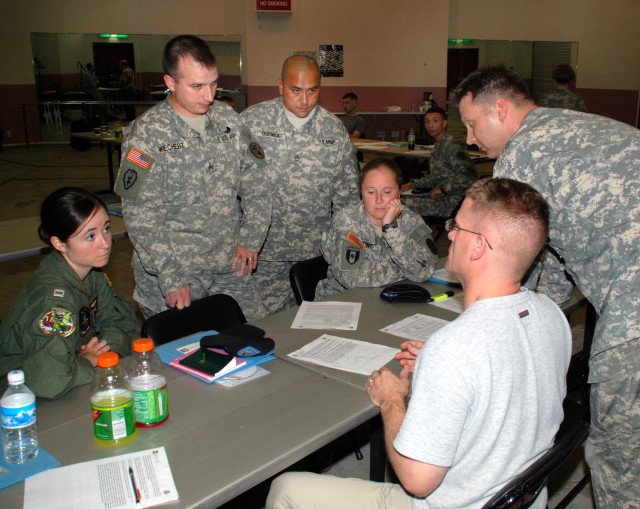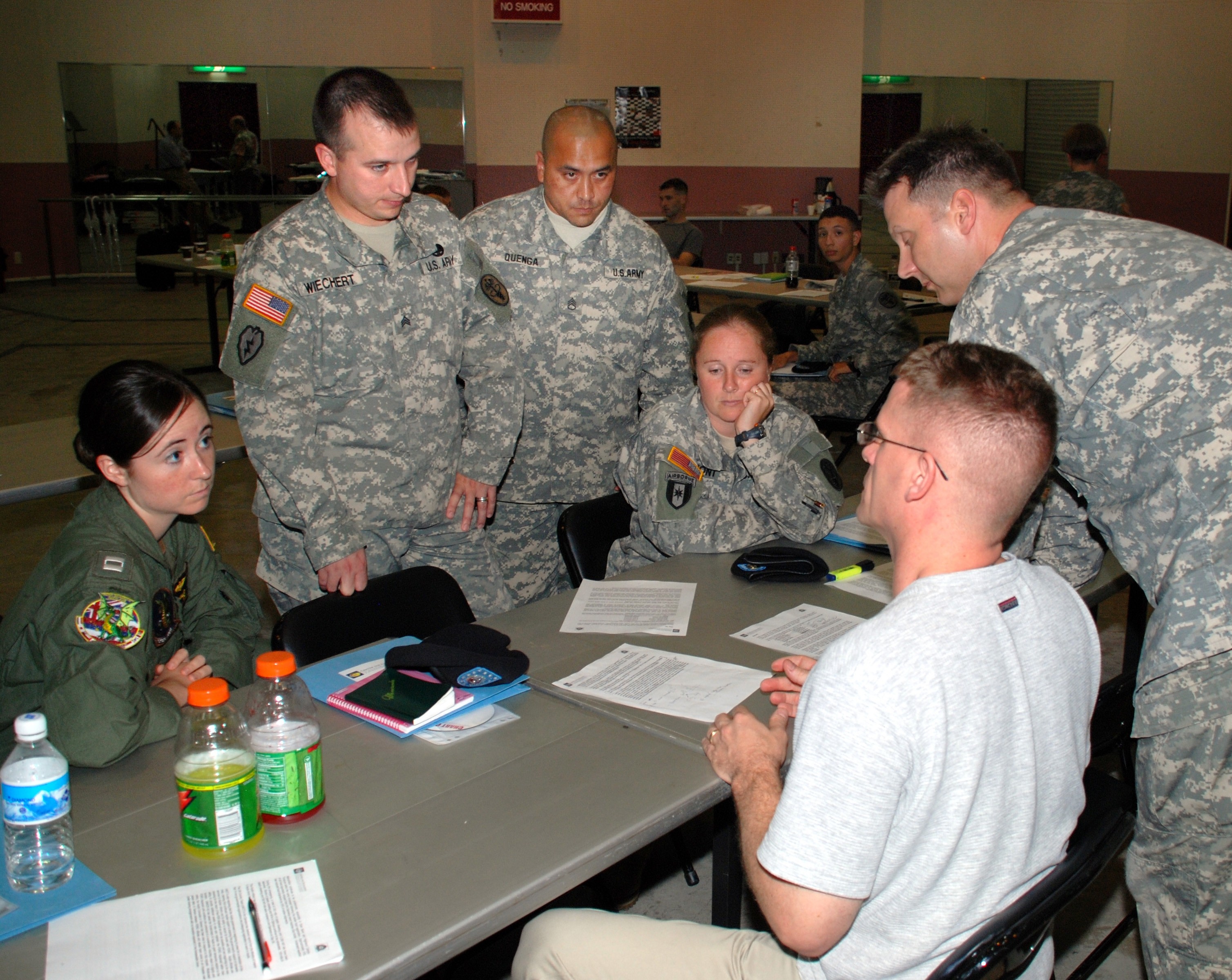
I CORPS (Forward)
and
U.S. Army Japan
Press Release
Press Release no: 01-09-08
September 4, 2008
Workshop strengthens humanitarian assistance capabilities
By Christopher Bush, U.S. Army Staff Writer
CAMP ZAMA, JAPAN - More than 30 U.S. Servicemembers from around the Pacific Rim attended a five-day training workshop that focused on military assistance to civilian-led humanitarian assistance and disaster responses here on Aug. 25 - 29.
The Hawaii-based Center for Excellence in Disaster Management & Humanitarian Assistance administered the Combined Humanitarian Assistance Response Training, which focused on a wide variety of topics such as refugee assistance, food and water distribution, and public health considerations.
"A course of this nature really prepares these Soldiers to respond to any contingency or complex emergency in our area of responsibility," said Thomas J. Little, Center for Health Promotion & Preventive Medicine - Pacific commander. "This training workshop was good for our Special Medical Augmentation Response Team."
Little said the CHPPM-PAC SMART team is responsible for deploying to any area of crises in the Pacific theater in the event of a massive humanitarian crises or natural disaster.
Bobby Ray Gordon, a humanitarian operations adviser for the COE's Humanitarian Affairs and Practice Unit and lead facilitator for the workshop, said his team of professionals focused in on key areas of disaster response during the intensive training. The idea was to get the Servicemembers acquainted with the numerous agencies and organizations who they could be working with in the event of a disaster or crises.
"We go through who are the key civilian actors that you will come across, U.S. government agencies, the United Nations, the Red Cross movement societies, and nongovernmental organizations," Gordon explained. "We go through and talk about their roles and their mandates and the principles that they follow. Then we talk about how the U.S. military can 'plug-in' and assist civilian-led humanitarian crises response."
In addition to numerous hours of lectures and presentations, the Servicemembers also participated in exercises where they "sited" three refugee camps while taking into consideration where to place food distribution points and latrine facilities, according to Gordon.
"This was a very, very good course. It actually teaches you, as a Soldier, about how civilian nongovernmental employees operate in a humanitarian operation," said Staff Sgt. Peter Quenga, noncommissioned officer-in-charge of ambulatory services at BG Crawford F. Sams U.S. Army Health Clinic. "This week really opened my eyes, I know that.
CAMP ZAMA - U.S.Servicemembers discuss various humanitarian relief scenarios during the Combined Humanitarian Assistance Response Training at the Camp Zama Community and Cultural Center on Aug. 29. The five-day course, facilitated by the Hawaii-based Center For Excellence in Disaster Management & Humanitarian Assistance, provided the Servicemembers with an understanding of the international humanitarian organizations and how the military can effectively work hand-in-hand with these organizations during numerous crises. Photo by Chris Bush, U.S. Army photographer
-end-
For more information contact:
U.S. Army Japan Public Affairs Office
Camp Zama, Japan
Unit 45005
APO AP 96343-5005
DSN (315) 263-5796 or 8500
DSN Fax (315) 263-7554
Commercial: 046-407-5796
Direct from U.S.: 011-81-46-407-5796 or 8500
e-mail: WebmasterUSARJ@zama.army.mil
http://www.usarj.army.mil/

Social Sharing